- Sunflower: Growing in the Garden, Species
- Introduction
- Species of Sunflowers
- Growing Sunflowers in Your Garden
- Conclusion
- Sunflower Varieties: Choosing the Right One for Your Garden
- 1. Dwarf Sunflowers
- 2. Giant Sunflowers
- 3. Multi-Branching Sunflowers
- 4. Pollen-Free Sunflowers
- 5. Edible Sunflowers
- Sunflower Planting: Tips for a Successful Garden
- 1. Choose the right location
- 2. Prepare the soil
- 3. Planting the seeds
- 4. Watering
- 5. Providing support
- 6. Fertilizing
- 7. Protect from pests
- 8. Harvesting
- 9. Companion planting
- 10. Enjoy the beauty and benefits
- Sunflower Care: Essential Guidelines for Healthy Plants
- 1. Sunlight and Temperature
- 2. Watering
- 3. Fertilizing
- 4. Mulching
- 5. Pest and Disease Control
- 6. Support and Pruning
- 7. Harvesting Seeds
- Sunflower Pests and Diseases: How to Protect Your Plants
- Pests
- Diseases
- Sunflower Harvesting: When and How to Harvest Sunflower Seeds
- When to Harvest Sunflower Seeds
- How to Harvest Sunflower Seeds
- Conclusion
- Sunflower Uses: Creative Ideas for Sunflower Seeds and Oil
- Sunflower Seeds
- Sunflower Oil
- Health Benefits of Sunflower Seeds and Oil
- Conclusion
- Sunflower Symbolism: Meaning and Significance in Different Cultures
- Ancient Greek Culture
- Native American Culture
- Chinese Culture
- European Culture
- Japanese Culture
- Sunflower Fun Facts: Surprising Information about Sunflowers
- 1. Origin and History
- 2. Growth and Size
- 3. Sunflower Seeds
- 4. Sunflower Symbolism
- 5. Sunflower Varieties
- 6. Sunflower Tracking the Sun
- Questions and Answers:
- What is the best time to plant sunflowers?
- How do I plant sunflowers in my garden?
- What are some common species of sunflowers?
- How long does it take for sunflowers to grow?
- Can I grow sunflowers in containers?
- Videos: I didn’t even plant these sunflowers | Garden Tour WEEK 28, 2023
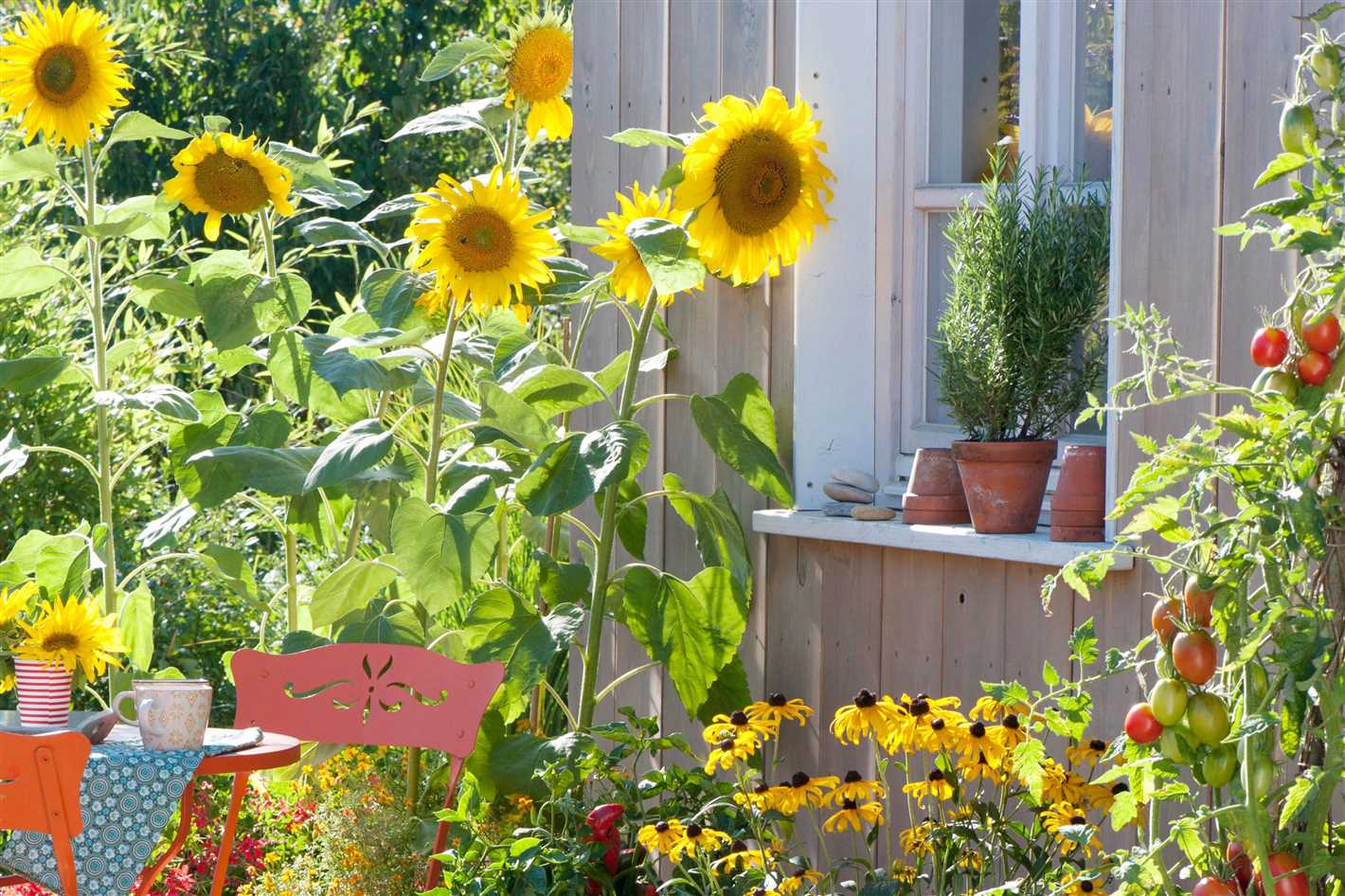
Welcome to our article on growing sunflowers in your garden! Sunflowers are not only gorgeous and vibrant, but they also symbolize warmth, happiness, and positivity. They add a touch of beauty to any garden space and can even be harvested for their nutritious seeds. In this article, we will explore the different species of sunflowers that you can grow in your own garden, providing you with a variety of options to choose from.
Growing sunflowers in your garden is a rewarding experience that can bring joy to both you and your visitors. Whether you have a large backyard or a small plot, there is a sunflower species that will suit your needs.
One popular sunflower species is the Helianthus annuus, which is an annual flower that can reach impressive heights of up to 10 feet. These sunflowers are known for their large, yellow blooms that follow the movement of the sun throughout the day, hence the name “sunflower”.
Another species to consider is the Helianthus debilis, which is commonly referred to as the beach sunflower. As the name suggests, this species is often found growing naturally on sand dunes and sandy beaches. It is a shorter sunflower, reaching heights of about 3-4 feet, and produces smaller, more delicate blooms.
Whatever species you choose, don’t forget to provide your sunflowers with plenty of sunlight, well-draining soil, and regular watering. With a little care and attention, you can enjoy the beauty of sunflowers in your garden all summer long.
Sunflower: Growing in the Garden, Species
Introduction
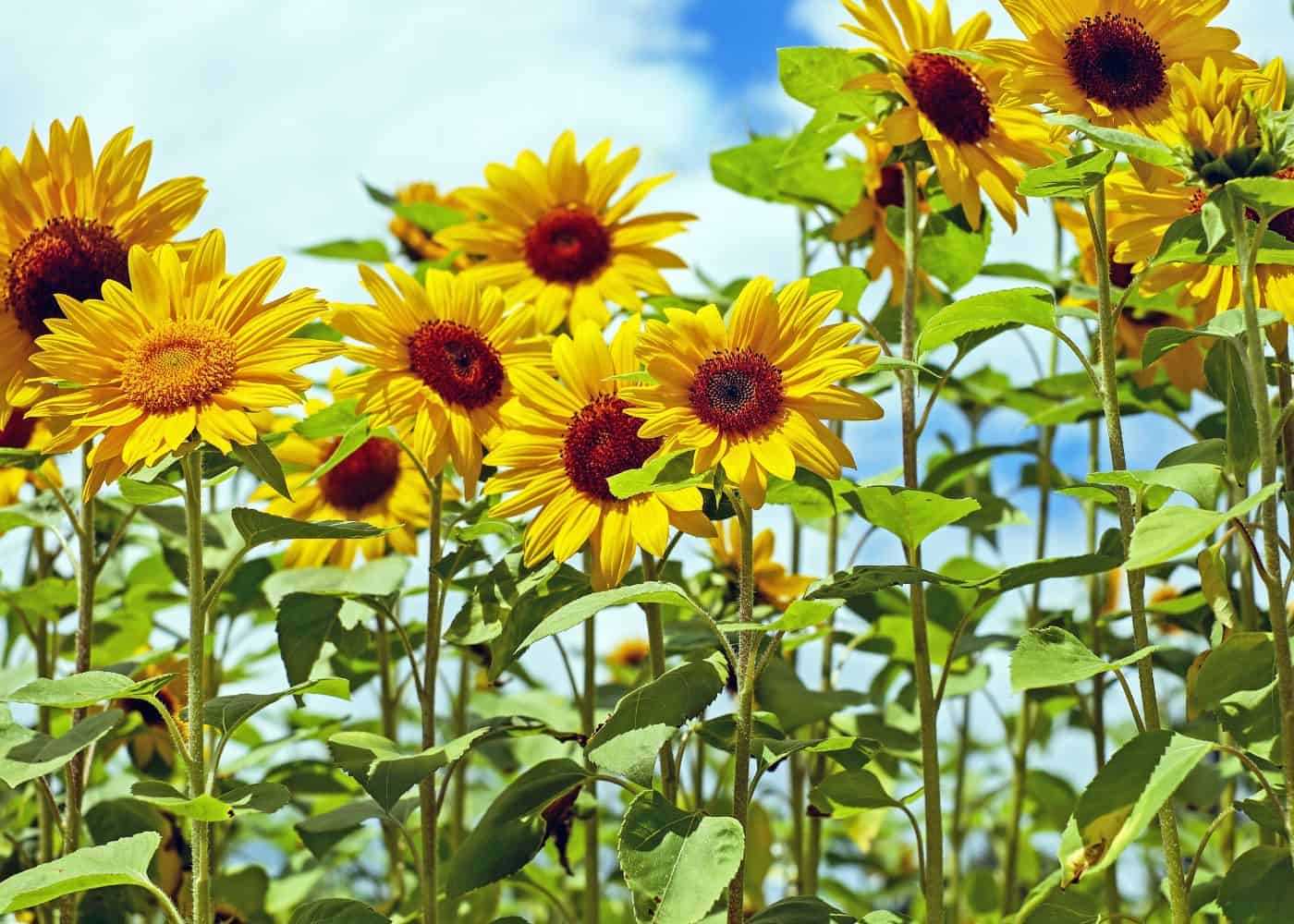

Sunflowers are beautiful and vibrant flowers that can add a touch of summer to any garden. They are easy to grow and come in various species with distinct characteristics. In this article, we will explore the different species of sunflowers and provide tips on growing them in your garden.
Species of Sunflowers
- Teddy Bear Sunflowers: These sunflowers have a fluffy appearance due to their fully double blooms. They are perfect for adding a unique texture to your garden, and their shorter height makes them suitable for smaller spaces.
- Mammoth Sunflowers: As the name suggests, these sunflowers can reach impressive heights, sometimes exceeding 10 feet. They have large, yellow blooms that can brighten up any garden. Mammoth sunflowers are a favorite among garden enthusiasts and can be a great addition to your landscape.
- Dwarf Sunflowers: If you have limited space or prefer smaller plants, dwarf sunflowers are a great choice. These compact plants have smaller blooms but still offer the same vibrant colors and beauty as their taller counterparts.
- Autumn Beauty Sunflowers: These sunflowers are known for their stunning color variations. They come in shades of red, yellow, orange, and burgundy, adding a touch of warmth to your garden during the autumn season.
Growing Sunflowers in Your Garden
- Choosing the Right Location: Sunflowers need ample sunlight, so choose a spot in your garden that receives at least 6-8 hours of direct sunlight per day.
- Preparing the Soil: Sunflowers prefer well-drained soil with a pH level of 6.0-7.5. Before planting, loosen the soil and remove any weeds or debris.
- Planting the Seeds: Sow the sunflower seeds directly into the soil at a depth of 1-2 inches, spacing them 6-12 inches apart depending on the variety. Water the seeds gently after planting.
- Watering and Care: Sunflowers are relatively drought-tolerant, but they still need regular watering, especially during dry spells. Keep the soil moist but not waterlogged. Mulching around the plants can help retain moisture and suppress weeds.
- Supporting Tall Varieties: If you are growing tall sunflower varieties, provide support to prevent them from toppling over. This can be done by staking or using cages around the plants.
- Harvesting Seeds: Once the flowers have bloomed and the petals start to wither, it’s time to harvest the seeds. Cut the heads off the plants and hang them upside down in a well-ventilated area to dry. Once dry, remove the seeds and store them in a cool, dry place for future planting or consumption.
Conclusion
Sunflowers are a delightful addition to any garden, and with the wide variety of species available, you can find the perfect sunflower to suit your preferences. By following the proper planting and care instructions, you can enjoy the vibrant colors and beauty of sunflowers in your own garden.
Sunflower Varieties: Choosing the Right One for Your Garden
Growing sunflowers in your garden can add a vibrant splash of color and bring a sense of joy and happiness. However, with so many different sunflower varieties available, it can be overwhelming to choose the right one for your garden. Here are some popular sunflower varieties to consider:
1. Dwarf Sunflowers
Dwarf sunflowers are perfect for small gardens or containers. These compact varieties typically grow to a height of 1-2 feet and produce smaller blooms. Some popular dwarf sunflower varieties include the Busy Bee, Music Box, and the Little Becka.
2. Giant Sunflowers
If you have a large garden space or want to create a statement with your sunflowers, consider planting giant sunflower varieties. These varieties can grow to heights of 10-14 feet or more and produce large, dinner-plate-sized blooms. The Russian Mammoth, Skyscraper, and American Giant are popular choices for giant sunflowers.
3. Multi-Branching Sunflowers
Multi-branching sunflowers produce multiple stems instead of a single main stem. This results in more blooms and a longer flowering period. These varieties are great for garden borders or for creating dense sunflower patches. The Lemon Queen, Autumn Beauty, and Chianti are examples of multi-branching sunflower varieties.
4. Pollen-Free Sunflowers
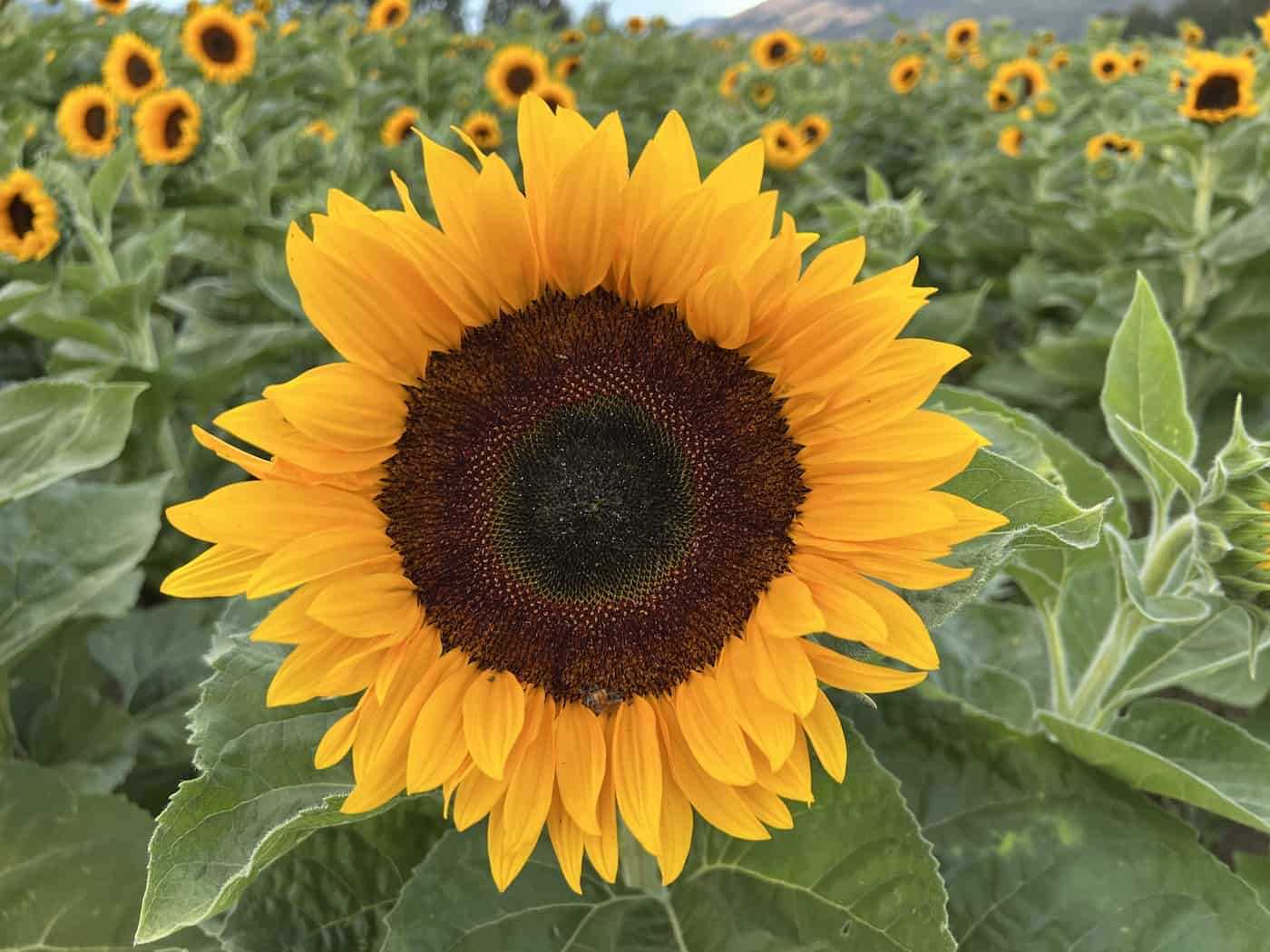

If you love sunflowers but have allergies or don’t want to deal with messy pollen, consider planting pollen-free sunflower varieties. These varieties have been bred to produce little to no pollen, making them perfect for cut flower arrangements or for individuals with sensitivities. The Sundancer, Sunbright, and ProCut series offer various colors and shapes of pollen-free sunflowers.
5. Edible Sunflowers
Not only are sunflowers beautiful, but some varieties also offer edible seeds and petals. Edible sunflowers are a great addition to any vegetable garden or as a tasty snack. Look for varieties like Mammoth Russian, Teddy Bear, and Italian White for seeds that are easy to harvest and enjoy.
When choosing a sunflower variety for your garden, consider factors such as the available space, desired height, bloom size, and any specific preferences you may have. Remember to provide adequate sun exposure, water, and nutrients for healthy growth and development. With the right sunflower variety, your garden will surely shine bright!
Sunflower Planting: Tips for a Successful Garden
1. Choose the right location
When planting sunflowers, it is important to choose a location that gets plenty of sunlight. Sunflowers thrive in full sun, so select a spot in your garden that receives at least 6 to 8 hours of direct sunlight per day.
2. Prepare the soil
Before planting sunflower seeds, prepare the soil by removing any weeds or vegetation. Sunflowers prefer well-draining soil, so consider adding organic matter or compost to improve the soil’s fertility and drainage.
3. Planting the seeds
Plant the sunflower seeds directly into the ground once the soil temperature reaches around 55°F (13°C). Sow the seeds about 1 inch deep and 6 inches apart. If you’re planting multiple rows, leave a spacing of 2 to 3 feet between the rows.
4. Watering
After planting, water the sunflower seeds thoroughly. Keep the soil consistently moist but not waterlogged. Once the sunflowers have established, they are generally drought-tolerant and do not require much additional watering.
5. Providing support
Most sunflowers grow tall and may need support to prevent them from toppling over. Consider staking or using a trellis to support the sunflowers as they grow. This will help keep them upright and protect them from wind damage.
6. Fertilizing
While sunflowers are relatively low-maintenance, you can fertilize them with a balanced fertilizer, such as a 10-10-10, during their early growth stages. Be careful not to over-fertilize, as this can lead to excessive foliage growth instead of focusing on flower production.
7. Protect from pests
Keep an eye out for common garden pests, such as slugs, snails, and birds, which may feed on sunflower seeds and young plants. Use organic pest control methods or physical barriers to protect your sunflowers from damage.
8. Harvesting
You can harvest sunflower seeds once the back of the flower head turns brown and the seeds are fully developed. Cut the flower head off the stalk and hang it upside down in a cool, dry place to dry. Once the seeds are dry, remove them from the flower head and store them in an airtight container.
9. Companion planting
Consider planting sunflowers alongside other plants that can benefit from their presence. Sunflowers can attract bees and butterflies, which can help with pollination in the garden. Additionally, their tall stature can provide shade or act as a windbreak for smaller, more delicate plants.
10. Enjoy the beauty and benefits
Once your sunflowers have bloomed, take the time to enjoy their vibrant colors and size. Sunflowers can add a beautiful touch to any garden and also serve as a source of food for birds and other wildlife. Whether using them as a focal point or as part of a larger garden scheme, sunflowers are sure to bring joy and beauty to your outdoor space.
Sunflower Care: Essential Guidelines for Healthy Plants
Growing sunflowers can be a rewarding experience, but taking proper care of your plants is essential to ensure their health and vigor. Follow these guidelines to keep your sunflowers thriving:
1. Sunlight and Temperature
- Sunflowers require full sun, at least 6-8 hours of direct sunlight per day.
- Choose a location in your garden that receives ample sunlight throughout the day.
- Ensure that the soil is well-draining and rich in organic matter.
- Sunflowers can tolerate a wide range of temperatures, but they prefer warm weather conditions.
2. Watering
- Water your sunflowers regularly, especially during dry spells or when the soil feels dry to the touch.
- Avoid over-watering, as it can lead to root rot and other fungal diseases.
- Water at the base of the plants to prevent wetting the leaves, which can promote disease.
3. Fertilizing
- Apply a balanced fertilizer, such as a 10-10-10 or 14-14-14, when planting your sunflowers.
- Reapply the fertilizer every 4-6 weeks during the growing season to promote healthy growth.
- Avoid applying excessive amounts of fertilizer, as it can cause the plants to grow too tall and weak.
4. Mulching
- Apply a layer of mulch around your sunflowers to help conserve moisture, suppress weed growth, and regulate soil temperature.
- Use organic mulch, such as straw or wood chips, and spread it evenly around the base of the plants.
5. Pest and Disease Control
- Inspect your sunflowers regularly for any signs of pests or diseases, such as aphids, caterpillars, or powdery mildew.
- If necessary, use organic pest control methods, such as neem oil or insecticidal soap, to combat pests.
- Remove any infected or damaged leaves to prevent the spread of diseases.
6. Support and Pruning
- Depending on the variety, tall sunflowers may require staking or support to prevent them from toppling over in strong winds.
- Prune off any dead or damaged leaves and flowers to encourage continuous blooming and prevent the spread of diseases.
7. Harvesting Seeds
- Allow the sunflower heads to mature and dry on the stalk before harvesting the seeds.
- Protect the ripening heads from birds and squirrels by covering them with netting or brown paper bags.
- To harvest the seeds, cut off the heads and hang them upside down in a cool, dry place until the seeds are fully dry.
- Once dry, remove the seeds from the heads and store them in airtight containers for future use or consumption.
By following these essential guidelines, you can ensure the health and vitality of your sunflowers, allowing them to thrive and brighten up your garden with their cheerful blooms.
Sunflower Pests and Diseases: How to Protect Your Plants
Pests
Sunflowers are prone to various pests that can damage their growth and overall health. It is important to identify and control these pests to protect your plants. Here are some common sunflower pests:
- Aphids: These small, soft-bodied insects feed on the sap of sunflower plants, causing stunted growth and distorted leaves. Regularly inspect the plants for aphid infestations and spray them with insecticidal soap to control the population.
- Cutworms: These caterpillars hide in the soil during the day and emerge at night to feed on the stems of sunflower plants, causing them to wilt and die. Protect your plants by using collars around the base or handpicking the cutworms.
- Whiteflies: These tiny white insects suck the sap from sunflower leaves, causing yellowing and wilting. Use yellow sticky traps or insecticidal soap to monitor and control whitefly populations.
- Slugs and snails: These pests feed on sunflower leaves, leaving behind holes and slime trails. Set up beer traps or sprinkle diatomaceous earth around the plants to deter slugs and snails.
- Caterpillars: Various caterpillar species, such as the painted lady caterpillar, can feed on sunflower leaves and cause damage. Handpick the caterpillars or use biological control methods like Bacillus thuringiensis (BT) to manage their population.
Diseases
In addition to pests, sunflowers can also be susceptible to various diseases that can affect their growth and yield. Here are some common sunflower diseases:
- Downy mildew: This fungal disease causes yellow patches on the leaves and a fuzzy, grayish growth on the undersides. Plant disease-resistant varieties and provide adequate spacing between plants for airflow to reduce the risk of downy mildew.
- Powdery mildew: Powdery mildew appears as white, powdery spots on the leaves, stems, and flowers. Regularly inspect your plants and remove any affected parts. Avoid overhead watering and provide proper spacing to prevent powdery mildew.
- Botrytis blight: This fungal disease causes brown spots and mold on the flowers and leaves of sunflowers. Remove and destroy any infected plant material and ensure proper air circulation to prevent botrytis blight.
- Root rot: Overwatering or poorly drained soil can lead to root rot, which causes wilting, yellowing leaves, and stunted growth. Ensure proper drainage and avoid overwatering to prevent root rot in sunflowers.
- Rust: Rust appears as orange or brown pustules on the leaves and stems. Remove and destroy any infected plant parts and apply fungicides if necessary to control rust in sunflowers.
| Pests | Diseases |
|---|---|
| Regularly inspect the plants for pests and use appropriate control methods. | Plant disease-resistant varieties and provide proper spacing and airflow. |
| Use insecticidal soap or other organic pest control measures for aphids, cutworms, whiteflies, slugs, and caterpillars. | Remove and destroy infected plant material and apply fungicides if necessary. |
| Set up traps or barriers to deter slugs and snails. | Avoid overwatering and ensure proper drainage to prevent root rot. |
| – | Regularly inspect plants and remove affected parts to control powdery mildew. |
Sunflower Harvesting: When and How to Harvest Sunflower Seeds
Harvesting sunflower seeds can be an exciting and rewarding experience for any gardener. Sunflowers are not only beautiful, but they also provide a delicious and nutritious snack in the form of their seeds. Here are some tips on when and how to harvest sunflower seeds:
When to Harvest Sunflower Seeds
The perfect time to harvest sunflower seeds is when the back of the flower head turns yellow or brown, and the petals have fallen off. The flower head should feel dry to the touch and the seeds inside should appear plump and full.
It is important to wait until the seeds are fully matured before harvesting to ensure maximum flavor and nutritional value. Harvesting too early may result in seeds that are underdeveloped and lack flavor.
How to Harvest Sunflower Seeds
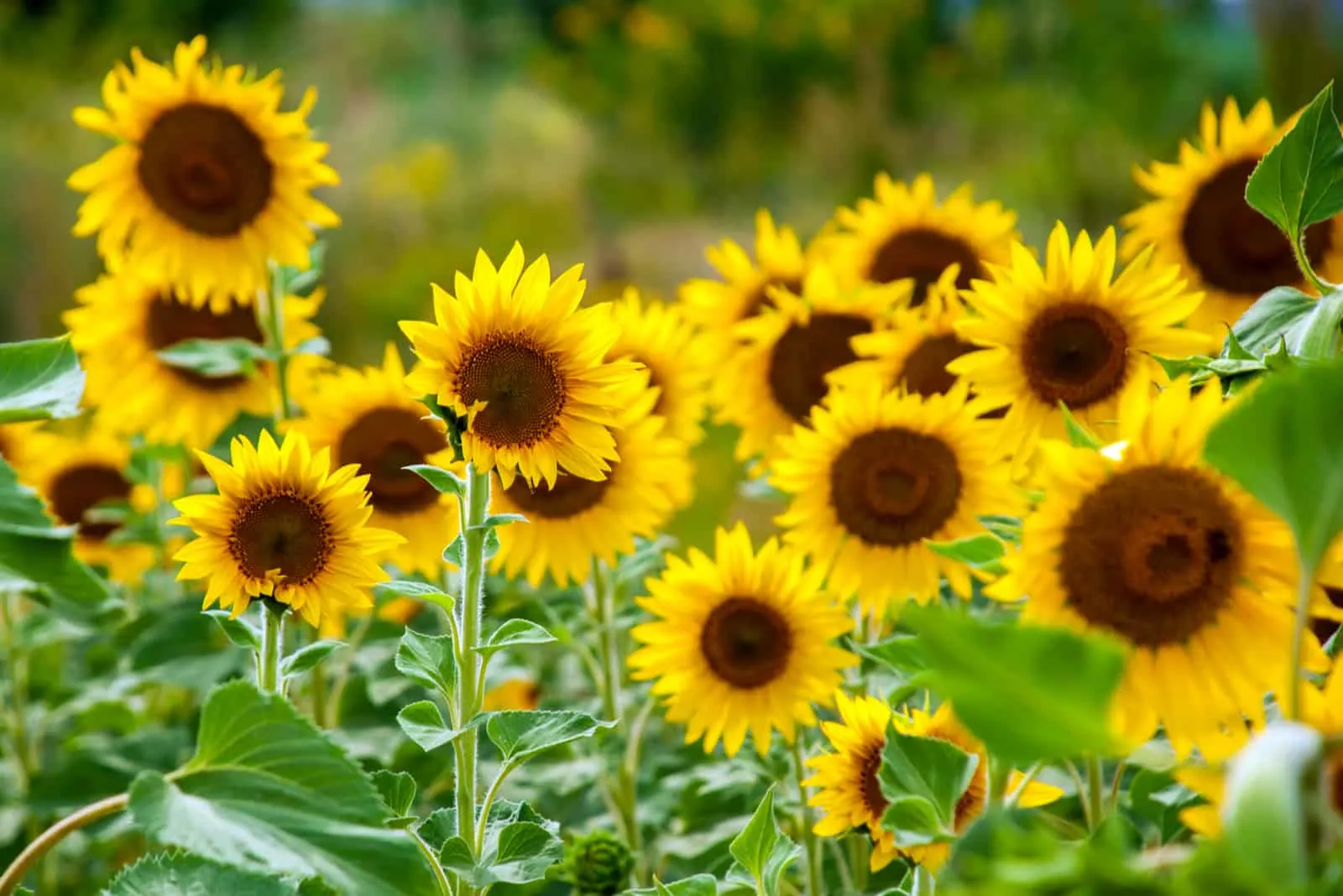

Once the sunflower seeds are ready to be harvested, follow these steps:
- Start by cutting the flower head from the stem using a sharp pair of garden scissors or pruners.
- Place the flower head upside down in a paper bag. This will catch any loose seeds that may fall during the drying process.
- Hang the bag in a well-ventilated and dry area, such as a garage or a shed. Allow the flower head to dry completely for about 2-3 weeks.
- Once the flower head is completely dry, gently rub the seeds with your fingers or a fork to separate them from the rest of the flower head.
- Remove any remaining plant material or debris from the seeds.
- Store the sunflower seeds in an airtight container in a cool, dry place.
Alternatively, if you prefer to harvest the seeds directly from the sunflower plant, you can leave the flower heads on the plant until they are fully dried. Then, cut the flower heads and follow the same steps to separate the seeds and store them.
Conclusion
Harvesting sunflower seeds can be a fun and rewarding part of gardening. By waiting until the seeds are fully matured and following the proper techniques for harvesting and storing, you can enjoy the delicious and nutritious benefits of sunflower seeds all year round.
Sunflower Uses: Creative Ideas for Sunflower Seeds and Oil
Sunflower Seeds
Sunflower seeds are not just a tasty snack, but they also have various uses in cooking, baking, and even as a topping. Here are some creative ideas for using sunflower seeds:
- Add them to your salads for an extra crunch and nutty flavor.
- Grind them and use them as a coating for chicken or fish for a healthier alternative to breadcrumbs.
- Bake them into breads, cookies, or granola bars for a nutritious boost.
- Sprinkle them on top of yogurt or oatmeal for added texture.
- Make your own trail mix by combining sunflower seeds with dried fruits and nuts.
Sunflower Oil
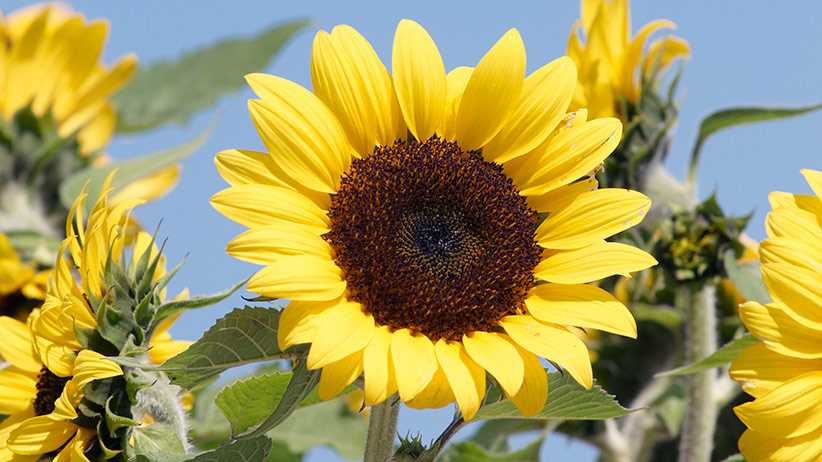

Sunflower oil is not just a cooking oil, but it also has various other uses and benefits. Here are some creative ideas for using sunflower oil:
- Use it as a base for homemade salad dressings and marinades.
- Apply it topically as a natural moisturizer for dry skin.
- Use it to make homemade mayonnaise or aioli.
- Apply it to wooden cutting boards or utensils to protect and condition them.
Health Benefits of Sunflower Seeds and Oil
In addition to their culinary uses, sunflower seeds and oil also offer several health benefits:
- Rich in vitamin E, which is beneficial for skin health.
- Contain healthy fats that can help reduce bad cholesterol levels.
- High in antioxidants that can help protect against free radicals.
- Can aid in weight loss due to their high fiber content.
Conclusion
Sunflower seeds and oil are not only versatile in the kitchen but also offer various health benefits. Use them in your cooking, baking, or skincare routine to enjoy their nutty flavor and reap their nutritional advantages.
Sunflower Symbolism: Meaning and Significance in Different Cultures
Sunflowers hold a special place in various cultures around the world and have been imbued with different meanings and significances throughout history. Here are some of the symbolic representations of sunflowers in different cultures:
Ancient Greek Culture
In ancient Greek culture, sunflowers were associated with the sun god Apollo, who represented light, music, and healing. The Greek mythology tells a story of a nymph named Clytie, who fell in love with Apollo. After she was rejected, she transformed into a sunflower, forever turning her face towards the sun, representing the eternal devotion and admiration.
Native American Culture
In many Native American cultures, sunflowers are seen as a symbol of harvest, abundance, and long life. The sunflower’s tall, strong stem was believed to bring protection, while its vibrant yellow petals represented the sun and its life-giving energy. The seeds were often used in ceremonies and rituals as a symbol of fertility and sustenance.
Chinese Culture
In Chinese culture, sunflowers symbolize good luck, happiness, and vitality. They are considered a powerful flower that brings positive energy and joy to those who possess or receive them. The sunflower’s bright yellow color is associated with wealth and success, making it a popular gift for celebrations and special occasions.
European Culture
In European culture, sunflowers have long been associated with the warmth and energy of the sun. They are often seen as a symbol of nourishment, strength, and resilience. Sunflowers were also used in art during the Renaissance period to represent the divinity and glory of the sun.
Japanese Culture
In Japanese culture, sunflowers are highly regarded and admired for their beauty and symbolism. They are seen as a symbol of summer and are associated with vitality, happiness, and good luck. Sunflowers are often used in art and literature to depict feelings of adoration, loyalty, and longevity.
| Culture | Symbolism |
|---|---|
| Ancient Greek | Eternal devotion, admiration |
| Native American | Harvest, abundance, protection |
| Chinese | Good luck, happiness, vitality |
| European | Nourishment, strength, resilience |
| Japanese | Beauty, vitality, happiness, good luck |
Sunflower Fun Facts: Surprising Information about Sunflowers
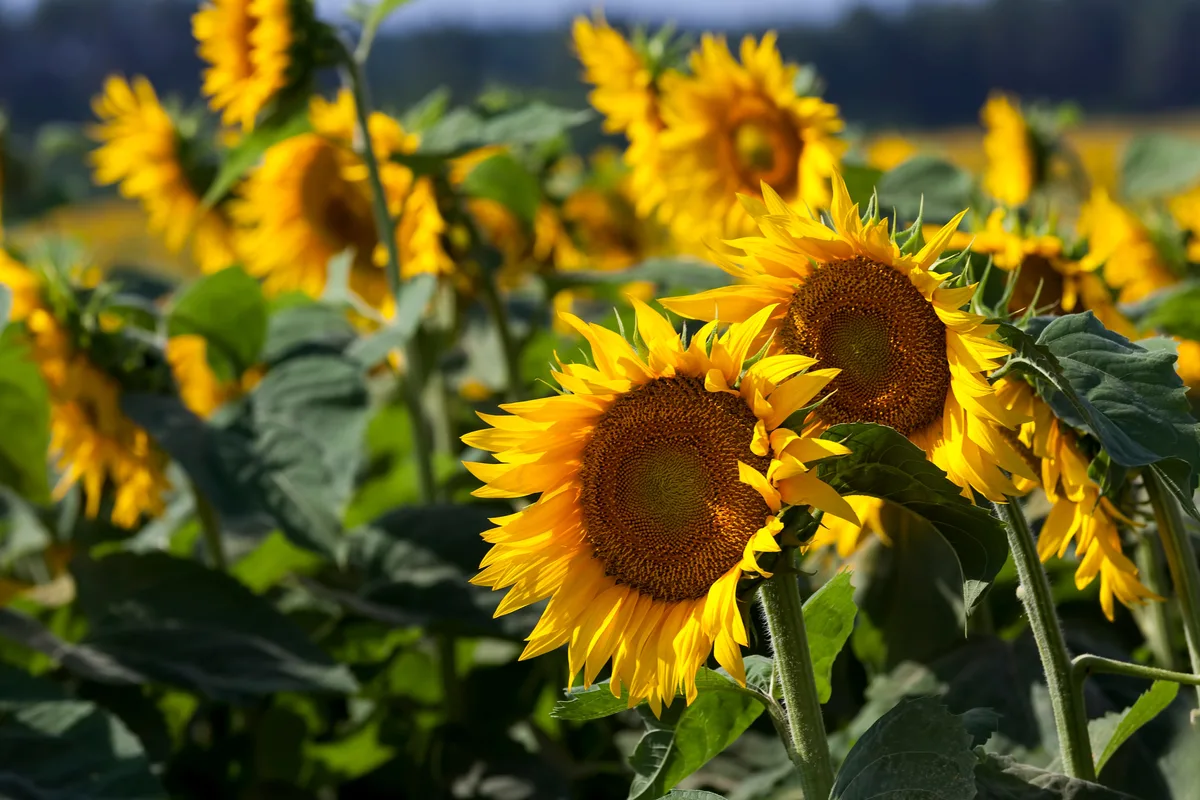

Sunflowers, with their bright yellow petals and towering height, are one of the most recognizable flowers in the world. However, there is more to these stunning plants than meets the eye. Here are some fun and surprising facts about sunflowers:
1. Origin and History
- Sunflowers are native to North America and were cultivated by Native Americans as early as 3000 BCE.
- They were brought to Europe in the 16th century by Spanish explorers and quickly gained popularity.
- Sunflowers have been cultivated for their oil and used in cooking and as a source of pigment for centuries.
2. Growth and Size
- Sunflowers can grow to impressive heights, with some varieties reaching up to 12 feet tall.
- The tallest sunflower ever recorded measured a staggering 30 feet and 1 inch!
- Sunflower heads can vary in size from small, 4-inch flowers to giant heads that are over 2 feet wide.
3. Sunflower Seeds
- Sunflowers produce a large number of seeds, with each flower head containing up to 2000 seeds.
- Sunflower seeds are not only a popular snack, but they are also a nutritious and high-energy food source.
- The oil extracted from sunflower seeds is widely used in cooking, as well as in the production of biodiesel and cosmetics.
4. Sunflower Symbolism
- Sunflowers have long been associated with happiness, positivity, and the sun.
- They are often seen as a symbol of loyalty and longevity.
- In many cultures, sunflowers are considered a sign of good luck and are given as gifts to bring joy and prosperity.
5. Sunflower Varieties
- While the most common sunflower variety has yellow petals and a dark center, there are also varieties with red, orange, and even purple petals.
- Some sunflowers have multiple heads on a single stem, creating a stunning display of flowers.
6. Sunflower Tracking the Sun
- The name “sunflower” is derived from the flower’s unique ability to track the sun’s movement across the sky.
- Young sunflowers face east in the morning and follow the sun as it moves westward throughout the day.
- As the sun sets, the sunflower heads will return to face east, ready for the next day.
These fun facts only scratch the surface of the wonders of sunflowers. Whether you grow them in your garden or simply admire them from afar, sunflowers are sure to brighten your day!
Questions and Answers:
What is the best time to plant sunflowers?
The best time to plant sunflowers is in late spring or early summer, when the soil has warmed up and there is no longer a risk of frost.
How do I plant sunflowers in my garden?
To plant sunflowers in your garden, choose a sunny spot with well-drained soil. Dig a hole that is twice as wide and deep as the sunflower root system. Place the sunflower seedling in the hole, backfill with soil, and water thoroughly.
What are some common species of sunflowers?
Some common species of sunflowers include Helianthus annuus, which is the most popular variety, as well as Helianthus maximiliani, Helianthus tuberosus, and Helianthus petiolaris.
How long does it take for sunflowers to grow?
The time it takes for sunflowers to grow depends on the variety and growing conditions. On average, sunflowers take 70-90 days to reach maturity from the time of planting.
Can I grow sunflowers in containers?
Yes, you can grow sunflowers in containers as long as the container is large enough to accommodate the sunflower’s root system. Choose a dwarf or compact variety of sunflower for container gardening.







